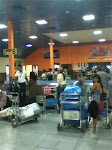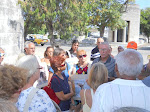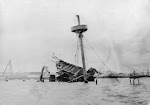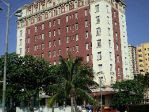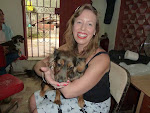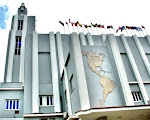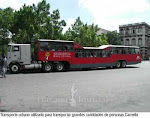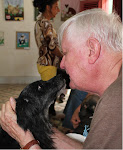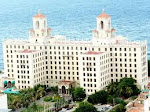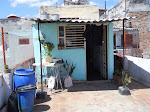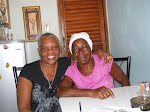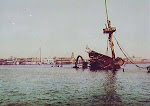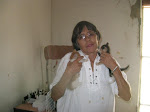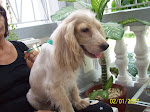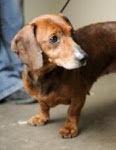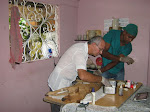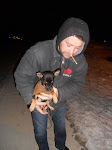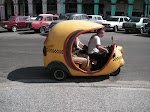I Remember You
It had been almost exactly a year since my last trip to Cuba, and I was staying in the hotel Presidente, as I always do. After seven trips, I had begun to look upon that place as my home away from home. I knew many of the hotel employees by name, such as George the elder and George the younger, two bellmen who remember me when I show up. Frank is another bellman who remembers me, and Natasha is a waitress in one of the hotel's two restaurants. Stepping into the lobby to register for a short stay is a little like old home week.
With two dogs and six cats at home, I often miss their company when I'm away, but even in the pet department, the hotel makes me feel at home with Bigotes, a tabby cat who haunts the porches and dining room. She is always ready for a petting session, as am I. At less than half the cost of the famous Hotel Nacional my budget appreciates the Presidente too.
The Hotel Presidente is an 11 story building built in 1928. When completed it was the tallest building in Cuba—for a while at least. I like buildings of this era. Other examples mightg be the Chrysler Building in New York, the Carew Tower in Cincinnati, and the Bok Singing Tower in Lake Wales, Florida. That era was one of workmanship, no skimming on details, and high quality construction.
The Presidente housed one of Cuba's first casinos in the well-known gangster era. Today there is no trace of it, and every floor is filled with guest rooms.
Getting around in Havana is easy if you're staying at the Presidente. Cabs, vans, and buses line up along the east and south sides, and there is seldom a wait for a ride. This year, my traveling companions, Jerry, Xenia and Bob, came outside with me to get a cab, and a handsome, smiling cabbie sprung to attention and held a door for Xenia. We settled in with me in the front seat, and I told him we were headed to Central Havana, but first we had to make a stop in Vedado to pick up another lady (Nora).
The cabbie brightened and said, "I remember you. You were here last year with two Dutch women and then also we had to go to Calle I to pick up Nora." I was dumbstruck—he had remembered me for a year, my Dutch friends and Nora's name. He went on, "I had to call for Nora on my cell phone as she lives on the tenth floor." Incredible, I thought, he recalled the cell call and the floor her apartment is on.
His name was Reynaldo, and I was blown away by his ability to recall one cab ride a year before. What I wouldn't give for a memory like that! Reynaldo and I chatted until we got to our destination. I figure I'll see him again on another trip to Havana. I sure hope so, and if I do, I'm certain he'll remember me.
I always thought I had a pretty good memory, but after two encounters with Reynaldo, I'll never brag about it again. In fact, as I write these blogs, I sometimes come up short trying to remember a name. If necessary, I'll make up a name when I can't remember. I figure who will know, and it doesn't make any difference to the point of the story.
For example, in this posting, both Georges, Frank, Natasha, Jerry, Xenia, and Bob are all real names of my friends. I hate to admit it, but Bigotes and Reynaldo were christened by me when I couldn't dig up their real names from the dust bin that serves as my memory.
Les Inglis
Saturday, March 24, 2012
Sunday, March 18, 2012
Subsistence
Subsistence
When I'm in Cuba, I spend most of my time in Havana, a city of more than two million people. Havana in 1958 was a modern, tourist-oriented capital city, and while it has suffered from a severe case of deferred maintenance since then, it is still like lots of other places in the world, albeit the worse for wear. But you can have a different view of Cuba if you venture into the rural areas.
I haven't seen eastern Cuba, but I have traveled a little into the western part of the island. This month we briefly visited Pinar del Rio and Viñales, a long drive from Havana. Our visit to a farm was worth discussion in these blogs.
We were near Viñales, famous for its loaf-of-bread shaped mountains (called "mogotes") and flat valley floors, giving the place an other-world flavor. One might expect a hilly transition between flat ground and mountains, but not here. The mountains have nearly vertical walls which pretty well prevent people from living on them. You find the people, instead, on the flat valley floors, and such was the setting for the farm we visited.
You'd be correct in calling it a subsistence farm, and it was difficult to imagine a whole family making its living on this barren land. We stopped the van on a deserted road, and saw the driveway curving up toward the small house in the distance. The driveway was too rough, so we got out of the van and walked toward the house. The bare ground of the driveway looked like the red earth of Georgia, but slightly darker.
The house may have had two rooms and a little front porch. There were a couple of sheds but no barn. Our driver had stopped here before, and he greeted the farmer. As they talked in rapid-fire, highly accented Spanish that I couldn't hope to understand, the rest of us walked around to see what kind of place this was. The wife (or possibly a daughter) was sitting on the front porch, nursing a baby, and several skinny little dogs milled around sniffing and scratching.
I discovered a large pot (more like a cauldron) sitting on a log fire behind the house. It's contents were boiling, and a burlap bag floated on the surface of the liquid in the pot. I puzzled over the burlap, and finally decided it was to suppress foaming. When I saw it, I didn't know what was cooking, but whatever it was, it was too much to be intended for the few people living in the house. It was clearly a farm product meant to be sold.
That guess proved to be right when I was told it was hot sauce, and then I saw a large carton of bottles of hot sauce filled, capped, and waiting to be sold or shipped to the city. We were told the farmer was certified by the government to bottle and sell his product.
Nora and the driver each bought several bottles of the hot sauce to take back to the city. That's the way lots of farm products make their ways to the dinner tables in Cuba. City dwellers, on trips to the country, buy farm products and take them back to give or sell to friends and relatives or possibly to be sold in the many little food stands you find in Havana. Nora and the driver were functioning as part of Havana's food supply system.
But Nora had a larger interest—the little dogs roaming about. She discovered there was no water bowl set out for them, and she told the farmer of her work in animal protection and gave a little lecture on always having water for them. She asked and got permission to treat the little dogs for parasites, and soon she was digging in her large bag for a syringe and a vial of medicine. Every dog got a dose of the medicine.
Nora and our driver bought another box of melanga root, a tough brown root that looks like something that would grow in a desert. Well, In this dry, dusty place, "desert" was a good word for the surroundings. Melanga can be peeled, fried, boiled into soup or stewed. It's a starchy, high-calorie standard part of the Cuban diet with a nut-like flavor. Once again, Nora and our driver were part of the food supply chain for Havana.
I told Charlene that I had never been on a farm so primitive before. There was no electricity, telephone, air-conditioning, or television. She said, "You haven't seen all of Kentucky, then." Well, not to be argumentative but I've seen a lot of Kentucky, and this little farm in Viñales, with strange shaped mountains in the distance was in a class by itself.
Les Inglis
When I'm in Cuba, I spend most of my time in Havana, a city of more than two million people. Havana in 1958 was a modern, tourist-oriented capital city, and while it has suffered from a severe case of deferred maintenance since then, it is still like lots of other places in the world, albeit the worse for wear. But you can have a different view of Cuba if you venture into the rural areas.
I haven't seen eastern Cuba, but I have traveled a little into the western part of the island. This month we briefly visited Pinar del Rio and Viñales, a long drive from Havana. Our visit to a farm was worth discussion in these blogs.
We were near Viñales, famous for its loaf-of-bread shaped mountains (called "mogotes") and flat valley floors, giving the place an other-world flavor. One might expect a hilly transition between flat ground and mountains, but not here. The mountains have nearly vertical walls which pretty well prevent people from living on them. You find the people, instead, on the flat valley floors, and such was the setting for the farm we visited.
You'd be correct in calling it a subsistence farm, and it was difficult to imagine a whole family making its living on this barren land. We stopped the van on a deserted road, and saw the driveway curving up toward the small house in the distance. The driveway was too rough, so we got out of the van and walked toward the house. The bare ground of the driveway looked like the red earth of Georgia, but slightly darker.
The house may have had two rooms and a little front porch. There were a couple of sheds but no barn. Our driver had stopped here before, and he greeted the farmer. As they talked in rapid-fire, highly accented Spanish that I couldn't hope to understand, the rest of us walked around to see what kind of place this was. The wife (or possibly a daughter) was sitting on the front porch, nursing a baby, and several skinny little dogs milled around sniffing and scratching.
I discovered a large pot (more like a cauldron) sitting on a log fire behind the house. It's contents were boiling, and a burlap bag floated on the surface of the liquid in the pot. I puzzled over the burlap, and finally decided it was to suppress foaming. When I saw it, I didn't know what was cooking, but whatever it was, it was too much to be intended for the few people living in the house. It was clearly a farm product meant to be sold.
That guess proved to be right when I was told it was hot sauce, and then I saw a large carton of bottles of hot sauce filled, capped, and waiting to be sold or shipped to the city. We were told the farmer was certified by the government to bottle and sell his product.
Nora and the driver each bought several bottles of the hot sauce to take back to the city. That's the way lots of farm products make their ways to the dinner tables in Cuba. City dwellers, on trips to the country, buy farm products and take them back to give or sell to friends and relatives or possibly to be sold in the many little food stands you find in Havana. Nora and the driver were functioning as part of Havana's food supply system.
But Nora had a larger interest—the little dogs roaming about. She discovered there was no water bowl set out for them, and she told the farmer of her work in animal protection and gave a little lecture on always having water for them. She asked and got permission to treat the little dogs for parasites, and soon she was digging in her large bag for a syringe and a vial of medicine. Every dog got a dose of the medicine.
Nora and our driver bought another box of melanga root, a tough brown root that looks like something that would grow in a desert. Well, In this dry, dusty place, "desert" was a good word for the surroundings. Melanga can be peeled, fried, boiled into soup or stewed. It's a starchy, high-calorie standard part of the Cuban diet with a nut-like flavor. Once again, Nora and our driver were part of the food supply chain for Havana.
I told Charlene that I had never been on a farm so primitive before. There was no electricity, telephone, air-conditioning, or television. She said, "You haven't seen all of Kentucky, then." Well, not to be argumentative but I've seen a lot of Kentucky, and this little farm in Viñales, with strange shaped mountains in the distance was in a class by itself.
Les Inglis
Sunday, March 11, 2012
Change in the Wind
Change in the Wind
Something is different in Cuba these days. We've been hearing about reforms since Fidel Castro stepped down for health reasons a few years ago. Younger brother, Raul Castro, didn't inherit a bed of roses when he took over the reins of the Cuban government. There were food shortages, money shortages, and Cuba's ponderously slow to change, Stalin style Communist economy was being compared unfavorably with the modern Chinese economic miracle.
Based on their actions so far, Cuba isn't going to be another China, but Raul seems to know that changes have to be made, and he isn't shrinking from the task. One of the early steps was to encourage certain private businesses. A Cuban entrepreneur could set up a small 12-seat restaurant in his home and run it as a private business. Immediately thereafter, "paladares" began springing up, and today they are some of the best places to eat in Cuba. More recently the 12-seat limit was relaxed. Result: still more restaurants.
Another early move was cell phones. They are evident today even though they cost more than most people earn. A popular way to have one is to get a relative in America to subscribe for your cell phone service. Now cell phones are becoming indispensable as they did everywhere else. They save trips in a transportation-poor economy, they stimulate business, and the entire Cuban nation is moving toward being in touch.
A big change came when people could buy and sell their cars. Newer cars as well as the old 50's era American cars can be bought and sold freely today. One wonders what the old restrictions on car sales ever did for anyone in Cuba. Today, if you have a car you don't need, you can sell it and get some money, which of course you do need.
But the biggest change of all is only a few months old. In the past you didn't own your house (even if it had been in your family for generations). The state owned it, but they allowed you to arrange trades of homes with other house dwellers. It was a slow, cumbersome procedure, but that trading loophole was how Aniplant got its headquarters in 2006. But today, in one of the biggest concessions to individual liberty since the Revolution, a Cuban can sell his house or buy a different one. If he is wealthy (not likely), he can even have a second home. This is a monumental change as it has created a real estate market, and it has put money in the citizens' pockets.
Also restrictions on private businesses have been further relaxed. Sitting in a new "paladar" for lunch last week right across the street from Radio Progresso where Nora presents her weekly radio shows, we had some great local food at ridiculously low prices. While we dined, a woman came in, approached our table, and tried to sell us a bead necklace. She was more insistent than she should have been, and the owner had to show her the door. Then two men entered separately and solicited the diners to buy their CD's with Cuban music. They were polite and the owner let them pass through and leave on their own. Finally a bicyclist pedaled by with baskets full of fresh flowers.
There you have it—4 private businesspeople trying to run their enterprises—something unimaginable when I first visited Cuba in 2005.
Finally on our way out of town to Pinar del Rio last Monday, we drove through Playa, a section of Havana, for a long time.. Suddenly I realized I was seeing crews of painters, carpenters, masons, and other workmen swarming over a number of houses along our route. And I realized I had been seeing lots of such activity all over town. Well, what would you expect? When a person knows he can sell his home, he has a valuable asset, and he moves to take care of it.
Cuba has a long way to go before it has a healthy economy again, but the signs of change for the better are there to see. Indeed I saw more change in the past year than I had seen in the previous six years. People still pay high prices for food and cope with many shortages, but at least they can buy building materials to fix the front porch or paint the house.
These long overdue changes can't be anything but good.
Les Inglis
Something is different in Cuba these days. We've been hearing about reforms since Fidel Castro stepped down for health reasons a few years ago. Younger brother, Raul Castro, didn't inherit a bed of roses when he took over the reins of the Cuban government. There were food shortages, money shortages, and Cuba's ponderously slow to change, Stalin style Communist economy was being compared unfavorably with the modern Chinese economic miracle.
Based on their actions so far, Cuba isn't going to be another China, but Raul seems to know that changes have to be made, and he isn't shrinking from the task. One of the early steps was to encourage certain private businesses. A Cuban entrepreneur could set up a small 12-seat restaurant in his home and run it as a private business. Immediately thereafter, "paladares" began springing up, and today they are some of the best places to eat in Cuba. More recently the 12-seat limit was relaxed. Result: still more restaurants.
Another early move was cell phones. They are evident today even though they cost more than most people earn. A popular way to have one is to get a relative in America to subscribe for your cell phone service. Now cell phones are becoming indispensable as they did everywhere else. They save trips in a transportation-poor economy, they stimulate business, and the entire Cuban nation is moving toward being in touch.
A big change came when people could buy and sell their cars. Newer cars as well as the old 50's era American cars can be bought and sold freely today. One wonders what the old restrictions on car sales ever did for anyone in Cuba. Today, if you have a car you don't need, you can sell it and get some money, which of course you do need.
But the biggest change of all is only a few months old. In the past you didn't own your house (even if it had been in your family for generations). The state owned it, but they allowed you to arrange trades of homes with other house dwellers. It was a slow, cumbersome procedure, but that trading loophole was how Aniplant got its headquarters in 2006. But today, in one of the biggest concessions to individual liberty since the Revolution, a Cuban can sell his house or buy a different one. If he is wealthy (not likely), he can even have a second home. This is a monumental change as it has created a real estate market, and it has put money in the citizens' pockets.
Also restrictions on private businesses have been further relaxed. Sitting in a new "paladar" for lunch last week right across the street from Radio Progresso where Nora presents her weekly radio shows, we had some great local food at ridiculously low prices. While we dined, a woman came in, approached our table, and tried to sell us a bead necklace. She was more insistent than she should have been, and the owner had to show her the door. Then two men entered separately and solicited the diners to buy their CD's with Cuban music. They were polite and the owner let them pass through and leave on their own. Finally a bicyclist pedaled by with baskets full of fresh flowers.
There you have it—4 private businesspeople trying to run their enterprises—something unimaginable when I first visited Cuba in 2005.
Finally on our way out of town to Pinar del Rio last Monday, we drove through Playa, a section of Havana, for a long time.. Suddenly I realized I was seeing crews of painters, carpenters, masons, and other workmen swarming over a number of houses along our route. And I realized I had been seeing lots of such activity all over town. Well, what would you expect? When a person knows he can sell his home, he has a valuable asset, and he moves to take care of it.
Cuba has a long way to go before it has a healthy economy again, but the signs of change for the better are there to see. Indeed I saw more change in the past year than I had seen in the previous six years. People still pay high prices for food and cope with many shortages, but at least they can buy building materials to fix the front porch or paint the house.
These long overdue changes can't be anything but good.
Les Inglis
Subscribe to:
Posts (Atom)
